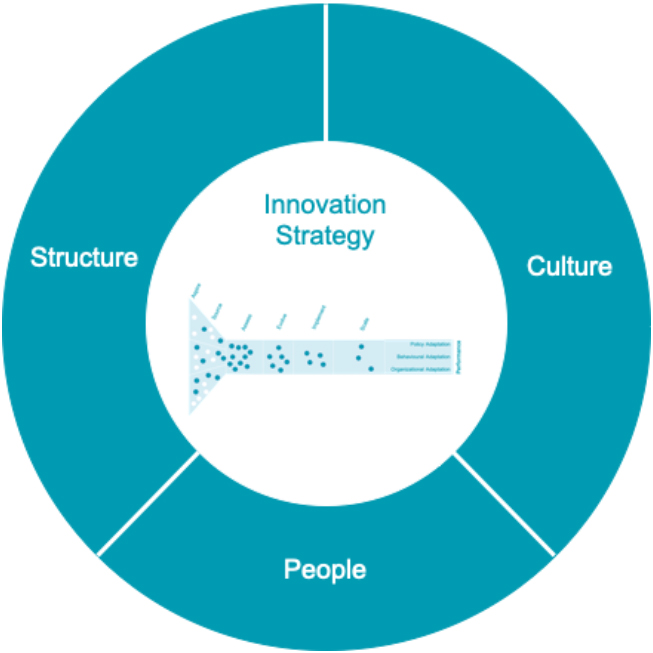This is the fourth part of a blog series on the innovation of political parties.
Innovative ideas can derive from different sources within or outside a political party, as discussed in our third blog article. But why are some parties better than others at using these ideas to their advantage? Which main areas do leaders and managers of political parties need to look at and manage strategically?
The core aspects of an innovation-friendly political party
Literature on innovation management is diverse and usually focuses on the private sector. So far it has failed to give business managers clear advice on how to build innovation management systems. There is practically no literature on how to successfully build up a coherent system and manage innovation in political parties. We therefore started with reviewing a selection of organisational models such as the systemic integration model by Königswieser, the Business Model Innovation theory by Johnson et al., as well as well-known management frameworks such as McKinsey’s 7-s-Framework. Based on our review, we matched these existing models with our experiences and thus deducted four aspects which are vital for creating an innovation-friendly political party: strategy, structure, culture and people.

(© The Innovation in Politics Institute)
The core of our framework is an organisation’s innovation strategy. In this regard, parties have a binary choice: either they have a strategy or they don’t. To find out more about innovation strategies in political parties, we invite you to read the second part of our blog series.
Apart from an innovation strategy, structure is another key denominator when it comes to a party’s ability to transform great ideas into great performance. This aspect consists of the party’s organisational structure and hierarchy, existing internal functions and positions as well as the party’s processes. As highlighted in our first blog article, to be innovative we encourage political parties to transform into ambidextrous organisations that are able to both refine and exploit the present, and at the same time explore the future. To push and drive innovation strategically, political parties can also create new positions. In the business world, introducing Chief Innovation Officers has become a well-known approach.
Additionally, leaders should look at a political party’s organisational culture. Researchers have been working on this topic for decades. To create our model, we specifically looked at Schein’s Model of Organisational Culture, Pisano’s Innovation Culture Principles and Gassmann’s work on innovation cultures. We concluded: if a political party seeks to adopt an innovation-friendly culture, we advise to look at three layers of innovation culture: the organisation’s values, how leaders and managers embed these values in their strategic decisions, and to what extent employees embrace these values in their daily political work.
Thirdly, we see people as a key for improving the innovativeness of political parties. In this regard leaders should ask whether the people in the organisation have the right mindset and the necessary skills and know-how to not only generate great ideas but to drive and implement them, as well.
It is about managing all aspects, not focusing on a single one
Our framework aims to shed light on the core aspects of creating an innovation-friendly political party which is able to transform great ideas into great results. We strongly advise party leaders and managers to not only focus on one single aspect. Instead, they need to understand that to drive innovation in the party, they need to manage all aspects at the same time. This requires leaders to provide the necessary resources, be it time, money or personnel. Innovation is a numbers game, not only when it comes to finding great ideas but also to transforming ideas into concrete results.
In our next article, we will wrap up this blog series and provide you with a short guide on how to improve the innovativeness of a political party.
